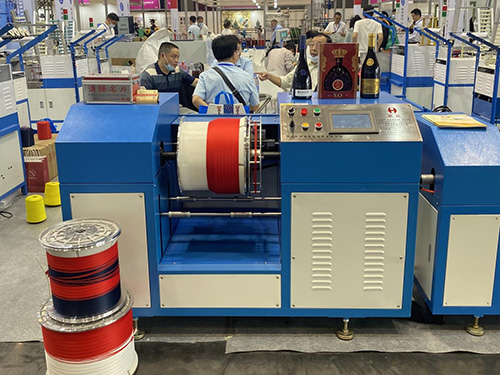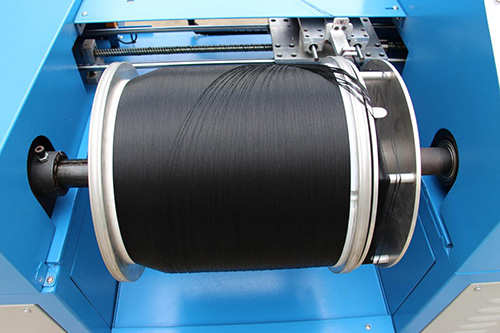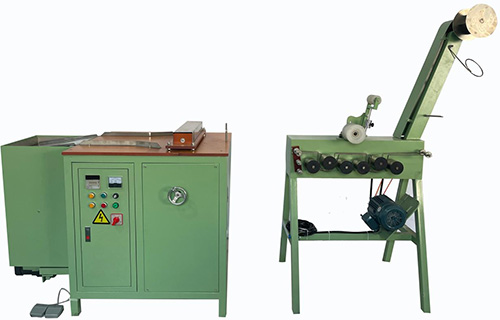22 Jul 2022
The ancient textile and dyeing technology has a long history. As early as the primitive society, the ancients knew how to use local materials, use natural resources as raw materials for textiles and printing and dyeing, and manufacture simple textile tools to adapt to climate change. To this day, our daily clothes, some daily necessities and works of art are the products of textile and dyeing technology.
Chinese machine tool textile originated from spinning wheels and waist machines in the Neolithic period 5,000 years ago. During the Western Zhou Dynasty, simple machines with traditional performance appeared. Jacquard and twill looms were widely used in the Han Dynasty. After the Tang Dynasty, my country's textile machinery became more and more perfect, which greatly promoted the development of the textile industry. Since the development of textile original equipment is designed according to textile raw materials, raw materials play an important role in the textile process. In ancient times, the fibers used for textiles around the world were natural fibers, usually three types of staple fibers: wool, hemp and cotton. For example, in the Mediterranean region, the only fibers used for textiles are wool and linen; cotton was previously used in the Indian peninsula. In addition to using these three kinds of fibers, ancient China also made extensive use of long fibers - silk.

Silk is the long, thin textile fiber of all natural fibers that can be woven into a variety of intricately patterned jacquard fabrics. The wide application of silk fibers has greatly promoted the progress of ancient Chinese textile technology and textile machinery, making silk production technology a characteristic and representative textile technology in ancient China.
Textile machinery is all kinds of machinery and equipment required to process natural fibers or chemical fibers into textiles. Although the machinery for the production of chemical fibers includes a variety of chemical machinery, it is now considered to be an extension of textile machinery and belongs to the generalized textile machinery. Textile machinery is the production means and material basis of the textile industry, and its technical level, quality and manufacturing cost are directly related to the development of the textile industry. After years of tortuous development, China's textile machinery industry has become a pillar industry with complete categories, meeting industry needs and having independent research and innovation capabilities.
Many enterprises that manufacture warping machines have low economic benefits, and the direct manifestation of serious losses is that the cost is too high. Under the circumstance that the prices of raw materials and energy have risen sharply, there are no effective measures to save energy and reduce consumption, resulting in rising material consumption costs, especially There is a lot of waste when making the slitting part, which is what we should pay special attention to. Many loss-making enterprises have imperfect management foundations, lack of scientific and reasonable materials, consumption quotas, and imprecise enterprise management systems, resulting in serious waste and excessive material consumption.

Sectional warping machine is a part of the rapidly developing textile machinery in the world, but in the current environment of full utilization of resources, it is necessary to pursue full utilization of various parts and thrift of materials. In order to achieve good corporate benefits and win market competitiveness, it is necessary to improve the material consumption of the current warping machine.
As the biggest function or attribute of this kind of textile machinery, segmentation has very high requirements for warping machines. Although there are many different models derived from this, the function of this segmentation is That won't change, that's the core.
When we use the warping machine, on the one hand, we must do a good job in the technology of the warping machine, and on the other hand, we must do a good job in the improvement and upgrading the warping machine to keep pace with the times. From the past mechanical transmission and control to the modern mechanical transmission and microcomputer control, the process design has also undergone qualitative changes. The moving speed of the fixed-width reed of the original segment warping machine varies in steps. Therefore, in order to obtain good warping and forming, it is generally necessary to adjust the appropriate inclination angle of the beveled plate to meet the requirements. However, the new high-speed split meridian machine fixed the inclination angle of the inclination angle plate, and the fixed moving speed can be changed without level, and the fixed moving speed is controlled by the microcomputer servo motor, which is very convenient to set and change, so just calculate An appropriate fixed moving speed can meet the requirements.

Some of the problems that exist today are the rapid rise in labor and raw material costs. In the cost of textile enterprises, raw materials account for about 60% to 70% of the main business cost, and labor costs account for about 10% to 15%. The price of raw materials is showing an accelerating trend. In addition, the increase in electricity prices has greatly increased the electricity burden of the textile industry. Labor costs are rising by 15% to 20% annually. The lack of operability in many places of the new labor contract law has exacerbated the recruitment difficulties of textile enterprises. According to the sampling survey by the relevant departments, the comprehensive cost of labor cost, raw material price, environmental protection and so on have increased by about 20-30%.
With the high degree of mechanization and automation of production, labor costs begin to decrease, and production efficiency continues to improve. The fully automatic section warping machine has brought great convenience and cost savings to the webbing industry.
Keywords: yarn warping machine
Originally published 22 Jul 2022, updated 22 Jul 2022.